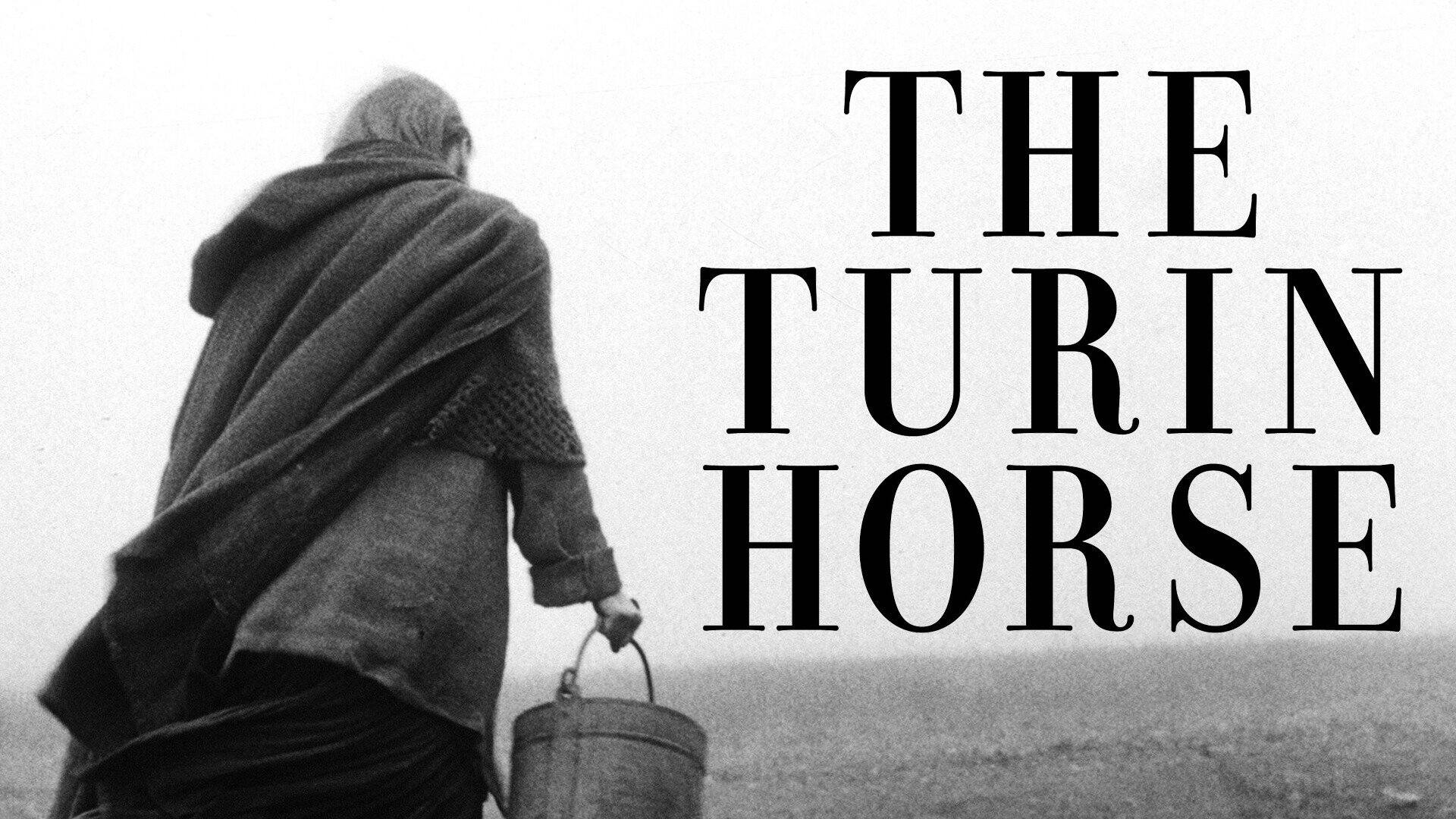
Are you a fan of thought-provoking and visually stunning movies? If so, then you’ve probably heard of the movie “The Turin Horse.” Directed by Hungarian filmmaker Béla Tarr, this masterpiece has captivated audiences with its slow-paced narrative and mesmerizing black-and-white cinematography.
In this article, we will explore 31 fascinating facts about “The Turin Horse” that will not only give you insight into the making of the film but also enhance your understanding and appreciation of its profound themes. From the film’s inspirations and production challenges to its critical acclaim and lasting impact, we’ll cover it all.
So, grab some popcorn, sit back, and let’s dive into the world of “The Turin Horse”!
Key Takeaways:
- “The Turin Horse” is a Hungarian film that tells a deep and thought-provoking story with minimal dialogue and a deliberately slow pace, challenging traditional storytelling norms.
- The movie’s haunting atmosphere, powerful performances, and philosophical depth make it a cinematic masterpiece that demands introspection and reflection on life’s existential questions.
The Turin Horse is a Hungarian film
The movie was directed by Béla Tarr and co-written by Tarr and László Krasznahorkai. It was released in 2011 and gained critical acclaim for its unique visual style and thought-provoking storytelling.
It is inspired by Friedrich Nietzsche’s breakdown
The movie takes its inspiration from an apocryphal story about the philosopher Friedrich Nietzsche witnessing a horse being beaten in the streets of Turin. This event is said to have caused Nietzsche’s mental breakdown.
The film only consists of 30 long takes
One of the most unique aspects of The Turin Horse is its minimalist approach to filmmaking. The entire movie is composed of only 30 long takes, each carefully choreographed and meticulously executed.
It explores themes of isolation and existential crisis
The Turin Horse delves deep into the themes of human isolation, existential crisis, and the futile nature of existence. The characters in the film are trapped in a repetitive and monotonous routine that gradually erodes their spirits.
The film has a deliberately slow pace
Béla Tarr, known for his slow and meditative style of filmmaking, chose to maintain a deliberately slow pace throughout The Turin Horse. This allows the audience to fully immerse themselves in the bleak atmosphere of the film.
The movie received the Silver Bear at the 2011 Berlin International Film Festival
The Turin Horse was highly praised by critics and received the Silver Bear in the Best Director category at the 2011 Berlin International Film Festival. The film’s haunting visuals and powerful storytelling captivated the audience.
The black-and-white cinematography adds to the film’s bleak atmosphere
The Turin Horse was shot entirely in black-and-white, which further enhances the sense of desolation and despair depicted in the film. The stark contrast and absence of color heighten the bleakness of the characters’ lives.
The soundtrack is minimalistic and haunting
The film’s haunting soundtrack, composed by Tarr’s frequent collaborator Mihály Víg, adds to the overall atmosphere of the movie. The minimalistic score enhances the sense of dread and melancholy portrayed on screen.
The Turin Horse is a deeply philosophical film
The movie raises profound philosophical questions about the human condition and the meaning of life. It challenges viewers to reflect on their own existence and the choices they make in the face of adversity.
The film’s narrative is intentionally minimal
The Turin Horse doesn’t rely on conventional narrative structures. Instead, it focuses on observing the everyday struggles of its characters in an almost documentary-like manner. The lack of traditional plot elements allows for a more immersive and introspective experience.
The horse is a central symbol in the film
The horse in The Turin Horse represents various themes such as freedom, suffering, and the cycle of life. Its mistreatment mirrors the existential struggles faced by the characters and serves as a catalyst for their own descent into despair.
The film explores the mundane aspects of life
By focusing on the repetitive and mundane aspects of the characters’ lives, The Turin Horse highlights the monotony and futility of existence. It forces the audience to confront the harsh realities of everyday life.
The movie has limited dialogue
The Turin Horse utilizes sparse dialogue, relying more on visual storytelling to convey its themes and emotions. This allows the audience to interpret the film in their own unique way.
The film immerses the audience in a sensory experience
Through its carefully crafted visuals and soundscape, The Turin Horse creates an immersive sensory experience. The audience is enveloped in the bleakness and despair of the characters, making it a deeply affecting film.
The movie challenges traditional storytelling conventions
The Turin Horse pushes the boundaries of traditional storytelling by eschewing traditional plot arcs and character development. Instead, it focuses on creating a mood and atmosphere that evoke strong emotional responses.
The film’s title holds symbolic significance
The title “The Turin Horse” references the horse incident in Turin, symbolizing the downward spiral and eventual collapse of the characters’ lives. It serves as a metaphor for the harsh realities they face.
The movie has a minimalist production design
The Turin Horse features minimalistic production design, with sparse and functional sets. This minimalism adds to the sense of desolation and emphasizes the characters’ isolation from the world around them.
The film’s long takes create a sense of timelessness
By employing long takes, The Turin Horse blurs the boundaries of time and creates a sense of timelessness. It emphasizes the cyclical nature of life and the repetitive routines the characters find themselves trapped in.
The Turin Horse is a challenging and thought-provoking film
This movie is not easily digestible and requires active engagement from the audience. Its inherent ambiguity and complex themes demand introspection and interpretation, making it a rewarding experience for those who appreciate intellectually stimulating cinema.
The film has gained a cult following
Despite its niche appeal, The Turin Horse has amassed a devoted cult following. Its unique approach to storytelling and philosophical undertones have resonated with a particular group of cinephiles and admirers of art-house cinema.
The movie was shot in only 30 days
Despite the meticulous nature of its long takes, The Turin Horse was completed in a relatively short span of just 30 days. This showcases the director’s skill in planning and executing the film’s visual style.
The Turin Horse received numerous accolades worldwide
In addition to winning the Silver Bear at the Berlin International Film Festival, The Turin Horse also received several other awards and nominations from various prestigious film festivals around the world. It solidified Béla Tarr’s reputation as a visionary filmmaker.
The movie’s ending leaves room for interpretation
The Turin Horse concludes with an enigmatic ending that leaves the audience to draw their own conclusions. This open-endedness fosters discussion and reflection long after the film has ended.
The Turin Horse is not a traditional narrative film
If you’re expecting a conventional narrative arc, The Turin Horse might not be for you. The film challenges traditional storytelling norms and eschews plot-driven elements in favor of a more experiential approach.
The film has strong political undertones
Beneath its minimalist exterior, The Turin Horse subtly addresses political and societal issues. It serves as a critique of oppressive systems and examines the consequences of living in a world devoid of hope and freedom.
The Turin Horse is a prime example of slow cinema
The film is often cited as a prime example of the slow cinema movement, characterized by its long takes, minimalistic storytelling, and contemplative pacing. It requires patience and a willingness to embrace a more introspective cinematic experience.
The movie’s atmosphere is haunting and oppressive
The Turin Horse creates an atmosphere of desolation and oppression that lingers long after the film ends. Its haunting visuals and layered sound design contribute to the overall sense of unease and despair.
The film’s use of silence speaks volumes
The absence of dialogue in many scenes of The Turin Horse speaks volumes about the characters’ emotional state and the futility of communication. The silence becomes a powerful tool for conveying their inner turmoil.
The movie invites introspection and deep reflection
The Turin Horse is not a passive viewing experience. It demands introspection and encourages deep reflection on life’s existential questions. It invites the audience to question their own existence and the choices they make.
The film’s powerful performances enhance its impact
The performances in The Turin Horse are understated yet incredibly powerful. The actors bring depth and nuance to their roles, further immersing the audience in the emotional journey of the characters.
The Turin Horse is a cinematic masterpiece
With its visually striking composition, philosophical depth, and haunting atmosphere, The Turin Horse is widely regarded as a cinematic masterpiece. It is a film that challenges and provokes, leaving a lasting impression on all who watch it.
Conclusion
In conclusion, “The Turin Horse” is a thought-provoking and visually stunning film that captivates its audience from start to finish. With its minimalistic approach and profound symbolism, the movie challenges viewers to contemplate the existential themes of human existence, suffering, and the inevitability of fate. With its masterful direction by Béla Tarr and mesmerizing performances by János Derzsi and Erika Bók, “The Turin Horse” is a cinephile’s delight.Throughout the movie, the horse becomes a powerful metaphor for the burdens and hardships we face in life, and the film’s bleak atmosphere is perfectly complemented by the hauntingly beautiful black-and-white cinematography. The slow-paced narrative and lack of traditional plot may not be for everyone, but for those willing to engage with its deep themes and immerse themselves in its atmospheric world, “The Turin Horse” is an unforgettable cinematic experience.
FAQs
1. What is the significance of the movie’s title, “The Turin Horse”?
The title “The Turin Horse” refers to an anecdote about the philosopher Friedrich Nietzsche. According to the story, Nietzsche witnessed a horse being mercilessly beaten by its owner in Turin, Italy. This event, which is said to have deeply affected Nietzsche, serves as a starting point for the film’s exploration of suffering, existence, and the decline of humanity.
2. Is “The Turin Horse” based on a true story?
No, “The Turin Horse” is not based on a true story. While it draws inspiration from the anecdote about Nietzsche, the film is a work of fiction created by director Béla Tarr and his co-writer László Krasznahorkai.
3. Is the film suitable for all audiences?
Due to its slow pace, minimal dialogue, and heavy themes, “The Turin Horse” may not appeal to casual moviegoers or those looking for fast-paced action. It is recommended for those who appreciate art-house cinema, philosophical explorations, and atmospheric storytelling.
4. Are there any awards or accolades associated with the film?
Yes, “The Turin Horse” received critical acclaim and was honored with several prestigious awards, including the Silver Bear at the Berlin International Film Festival in 2011. It was also selected as the Hungarian entry for the Best Foreign Language Film category at the 84th Academy Awards.
5. Can you recommend other movies by Béla Tarr?
Absolutely! Béla Tarr is known for his unique and evocative filmmaking style. Some of his other notable works include “Werckmeister Harmonies,” “Satantango,” and “Damnation.” These films also delve into deep existential themes and offer a similar atmospheric and immersive experience.
Was this page helpful?
Our commitment to delivering trustworthy and engaging content is at the heart of what we do. Each fact on our site is contributed by real users like you, bringing a wealth of diverse insights and information. To ensure the highest standards of accuracy and reliability, our dedicated editors meticulously review each submission. This process guarantees that the facts we share are not only fascinating but also credible. Trust in our commitment to quality and authenticity as you explore and learn with us.


